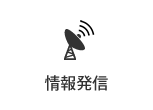本文
No.8(2013)11.Detection of gamma ray irradiated glucosamine-based tablets
Masayuki Sekiguchi, Seiko Nakagawa, Shunji Yunoki, Yoshimi Ohyabu
The main objective of this study was to create a database previously unexamined on food products and associated raw materials in order to identify their irradiation status. Photostimulated luminescence (PSL), thermoluminescence (TL), and electron spin resonance spectroscopy (ESR) were applied to detect whether glucosamine hydrochloride powders and tablets were irradiated or not. The glucosamine powders (Special grade chemical and food additive) and 3 types of tablets of different strengths manufactured with varying composition were irradiated with 137 Cs gamma rays at 1kGy. The glucosamine powders and a type of tablet had photon counts less than the lower threshold value (700 counts /min) in PSL measurements and also had no significant TL glow curve intensities for irradiation samples, so those had insufficient mineral debris. ESR signal of radiationinduced glucosamine radical was change from ESR triplet spectrum to a quadplex spectrum with storage time and ESR spectra of the tablets were somewhat affected by other components. However, those were stable for about 6 months. The typical cellulosic radicals of the cellulose powders isolated from the tablets were rapidly decreased after irradiation, but were possible to detect in two of three samples after about three months.
Keywords
Photostimulated luminescence, Thermoluminescence, Electron spin resonance, Glucosamine, Cellulose, Irradiated food













